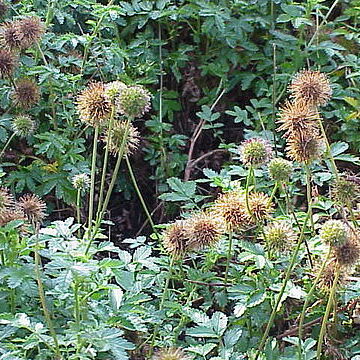Herbs, usually creeping, rarely suffrutescent. Leaves imparipinnate, rarely subdigitate. Inflorescences axillary or terminal, spicate or capitate. Flowers usually 4-merous, bisexual. Hypanthium ± obconoid, narrowed at the throat, usually armed with few to many barbed spines. Sepals 3-7, usually 4, valvate, free or shortly connate. Petals absent. Stamens 1-8, often 4, episepalous. Pistils usually 1, sometimes 2-4, free; ovary 1-locular; style terminal, stigma plumose. Achene(s) remaining enclosed in hypanthium.
Infl. capitate or spicate; fls us. perfect, occ. unisexual. Cupule investing carpels, us. with 4 or more spines; sepals us. 4, petals 0; stamens us. few; carpels 1 or 2; stigmas plumose, ample. Herbs to semi-woody plants, us. prostrate, with ascending scapose flowering branchlets; lvs imparipinnate, stipules adnate. About 150, mainly southern hemisphere, spp. The N.Z. spp. all have capitate infl., and, if interpreted in a narrow sense, are endemic, though some forms are closely related to Australian ones.
Perennial herbs or dwarf shrubs, often prostrate and forming large mats. Lvs imparipinnate; leaflets toothed; stipules adnate to petiole, persistent. Infl. terminal or axillary, capitate or spicate. Fls 3-5-merous, small, ☿ or ♀. Hypanthium deeply concave, contracted at mouth. Epicalyx 0. Calyx of 3-5 sepals. Petals 0. Stamens 1-10. Ovary superior, surrounded by the hypanthium. Styles 1-2. Ovules 1-2. Fr. of 1-2 achenes enclosed in dry hypanthium bearing 4 or more, often barbed, spines, or without spines.

